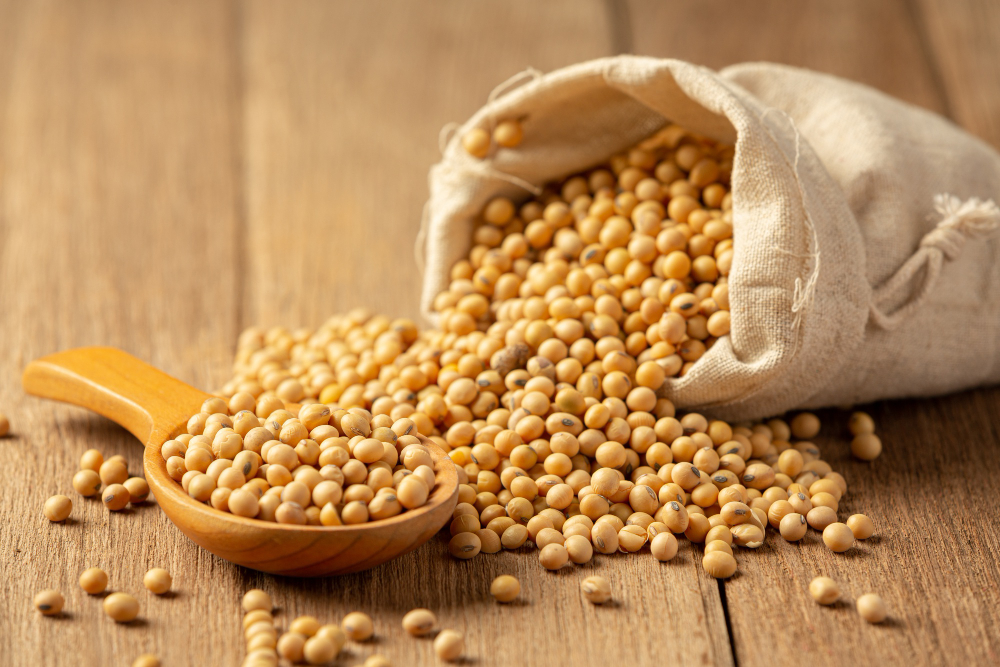Soya bean production is not just another facet of India's agricultural landscape; it's a critical component driving economic growth, ensuring food security, and sustaining rural livelihoods. Let's delve deeper into the various aspects that underscore the importance of soyabean cultivation in India.
Introduction to Soya Bean Production in India
Soya beans, scientifically known as Glycine max, have become an integral part of India's agricultural narrative. Their journey in Indian soil began several decades ago when they were introduced as a promising crop for diversification. Since then, soyabean cultivation has traversed geographical boundaries, spreading from its initial foothold in central and western regions to encompass vast swathes of agricultural land across the country.
Historical Context of Soya Bean Farming in India
Understanding the historical trajectory of soya bean farming in India unveils a narrative of experimentation, adaptation, and gradual acceptance. The mid-20th century marked a period of agricultural innovation, with the introduction of soya beans representing a departure from traditional crop patterns. As farmers ventured into uncharted territory, soya beans found favor in certain regions, gradually gaining traction and paving the way for their widespread cultivation.
Current Scenario of Soya Bean Production
In contemporary times, India stands as a significant player in the global soya bean market, with robust production figures to substantiate its position. States like Madhya Pradesh, Maharashtra, Rajasthan, and Gujarat emerge as strongholds of soya bean cultivation, boasting extensive acreages dedicated to this versatile crop. The recent years have witnessed a steady uptick in production, driven by factors such as technological advancements, improved agricultural practices, and supportive government policies.
Contribution of Soya Bean to India's Agriculture Sector
The significance of soya bean production transcends mere economic metrics; it permeates through various facets of India's agricultural ecosystem. Economically, soya beans serve as a lucrative source of income for millions of farmers, especially in regions where they form the backbone of agricultural activities. Moreover, the nutritional value of soya beans contributes to food security, with their derivatives finding applications in a myriad of food products consumed across the country.
Challenges Faced by Soya Bean Farmers
However, the journey of soya bean cultivation is not devoid of challenges. Pest infestations, diseases, and adverse weather conditions pose perennial threats to crop yields, often resulting in significant losses for farmers. Additionally, market volatility and fluctuating prices add another layer of complexity, impacting the financial stability of those engaged in soya bean farming. Addressing these challenges requires a multi-pronged approach encompassing pest management strategies, risk mitigation measures, and market interventions.
Government Initiatives to Boost Soya Bean Production
Recognizing the pivotal role of soya bean cultivation in India's agricultural landscape, the government has rolled out various initiatives aimed at bolstering production and enhancing farmer livelihoods. Subsidies on seeds, fertilizers, and irrigation facilities incentivize farmers to adopt soya bean cultivation, thereby stimulating growth in this sector. Furthermore, research and development efforts focus on developing high-yielding and disease-resistant varieties, ensuring sustainability and resilience in soya bean farming.
Environmental Impact of Soya Bean Cultivation
Amidst concerns over environmental sustainability, the impact of soya bean cultivation on the ecosystem cannot be overlooked. Intensive farming practices, coupled with the use of agrochemicals, can exert pressure on natural resources and ecosystems, leading to soil degradation and water pollution. To mitigate these concerns, there is a growing emphasis on promoting sustainable farming practices such as organic cultivation, integrated pest management, and conservation agriculture.
Future Prospects of Soya Bean Farming in India
Looking ahead, the future of soya bean farming in India appears promising, buoyed by technological advancements, evolving consumer preferences, and shifting market dynamics. Leveraging innovations in agricultural technology and biotechnology can enhance productivity, optimize resource utilization, and mitigate environmental impact. Moreover, tapping into emerging markets and diversifying product offerings can open up new avenues for growth and expansion in the soya bean sector.
In conclusion, soya bean production occupies a central position in India's agricultural tapestry, embodying resilience, innovation, and sustainability. As the nation strives towards agricultural self-sufficiency and rural prosperity, the role of soya beans assumes even greater significance, underscoring the need for concerted efforts to nurture and harness its potential.
To Get Real-Time Price of Soybean Visit: https://pricevision.ai
Source: https://bresdel.com/blogs/498385/How-Critical-is-Soya-Bean-Production-to-India-s-Agriculture





Comments